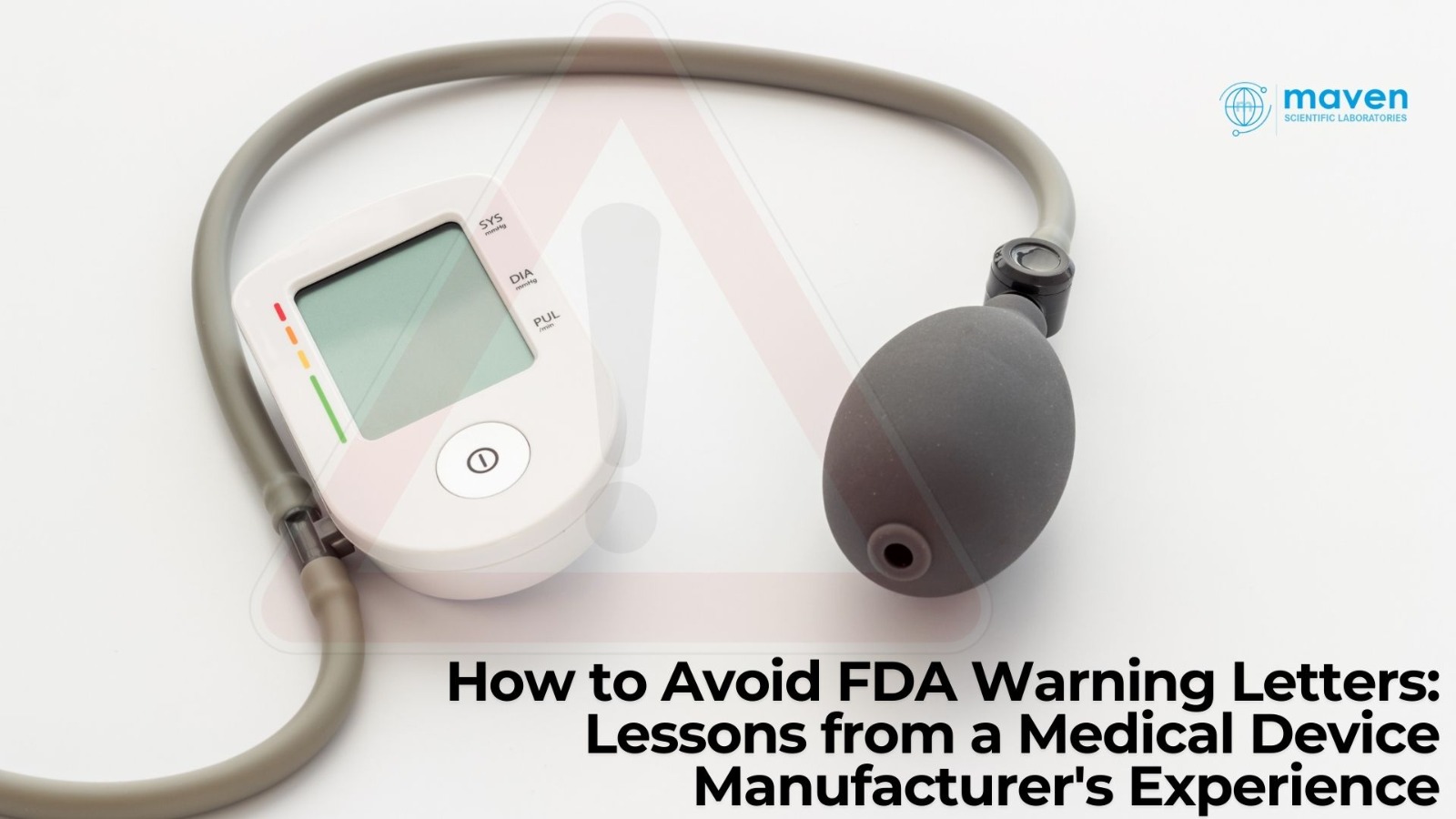How to Avoid FDA Warning Letters: Lessons from a Medical Device Manufacturer's Experience
January 16, 2025
In the highly regulated medical device industry, ensuring compliance with the United States Food and Drug Administration (FDA) standards is critical. A recent FDA Warning Letter to a firm manufacturing Class II implantable radiographic markers highlights the importance of adhering to the Quality System Regulation (QSR) under Title 21, Code of Federal Regulations (CFR), Part 820. This blog explores the key compliance violations identified and how Maven can assist manufacturers in overcoming these challenges.
Understanding the Compliance Issues
The FDA inspection, conducted between July 30, 2024, and September 24, 2024, uncovered significant violations in the design and manufacturing processes. These issues rendered the devices adulterated under Section 501(h) of the Federal Food, Drug, and Cosmetic Act (FD&C Act).
Key Compliance Violations
Design Control Deficiencies
Design controls are essential to ensure devices meet user needs and regulatory standards. The inspection revealed:
- Undefined design inputs: Missing definitions for parameters like patient population, surgical requirements, and device performance during in-vivo radiation treatments.
- Lack of design verification testing: The firm did not confirm claims regarding the bioabsorbable material.
- Inadequate design validation: The process failed to account for variations in patient anatomy and device placement.
- Poor documentation: Critical documentation was lacking during the transfer to production in offshore manufacturing facilities.
CAPA (Corrective and Preventive Action) Inadequacies
CAPA is vital for identifying and mitigating recurring issues. The inspection highlighted:
- Failure to detect recurring quality problems despite a spike in adverse event complaints.
- Insufficient statistical analysis of complaint data and inaccurate occurrence rates.
- Delayed initiation of CAPAs to investigate root causes of adverse events.
Medical Device Reporting (MDR) Violations
The firm violated 21 CFR Part 803 by failing to report adverse events, such as serious injuries, infections, and device explanations, within the mandated 30-calendar-day timeframe.
Reports of Corrections and Removals
The firm failed to submit required reports under 21 CFR Part 806 within 10 working days for corrections or removals. For example, corrections involving an accessory device were not reported in time, despite posing significant health risks.
Reasons for Compliance Challenges
Several factors contribute to these compliance gaps:
- Inadequate Risk Management: Lack of ongoing risk assessments and post-market surveillance to identify potential issues early.
- Weak Quality Systems: Poorly implemented or outdated design control, CAPA, and reporting processes.
- Documentation Gaps: Incomplete or missing documentation during critical phases like production transfers and design validation.
- Resource Constraints: Limited expertise or resources to manage regulatory requirements effectively, particularly during product development and manufacturing.
How Maven Addresses These Challenges
Strengthening Design Controls
- Defining Clear Inputs: Maven ensures design inputs align with user needs, intended uses, and regulatory expectations.
- Comprehensive Validation: We conduct robust design verification and validation studies to account for all potential risks.
- Production Documentation: Maven ensures seamless and well-documented production transfers to maintain design integrity.
Enhancing CAPA Systems
- Proactive Issue Detection: Maven applies statistical tools and quality metrics to identify trends and recurring issues.
- Root Cause Analysis: We facilitate timely and thorough investigations into adverse events.
- Training and Implementation: Maven provides tailored training and tools to establish effective CAPA systems.
Ensuring Regulatory Reporting Compliance
- Streamlined MDR Processes: We develop and implement clear MDR procedures to ensure timely reporting.
- Audits and Monitoring: Maven conducts regular audits to verify adherence to reporting requirements.
Risk Management and Post-Market Surveillance
- Risk Assessment: Maven helps conduct retrospective reviews of complaints and adverse events to identify systemic risks.
- Surveillance Programs: We support ongoing monitoring of device performance and safety in the market.
Customized Quality Systems
Maven collaborates with clients to build robust, compliant quality systems tailored to their specific needs. Our end-to-end regulatory support ensures alignment with FDA QSR requirements.
Conclusion
The recent FDA Warning Letter underscores the critical need for medical device manufacturers to prioritize compliance with FDA regulations. Addressing gaps in design controls, CAPA systems, and reporting processes is vital to safeguarding patient safety and avoiding regulatory penalties. Maven offers a comprehensive suite of solutions to assist manufacturers in overcoming these challenges, fostering a culture of accountability and continuous improvement. By partnering with Maven, companies can ensure compliance, enhance their quality systems, and build trust among stakeholders, paving the way for sustainable success in the medical device industry.


Post a comment